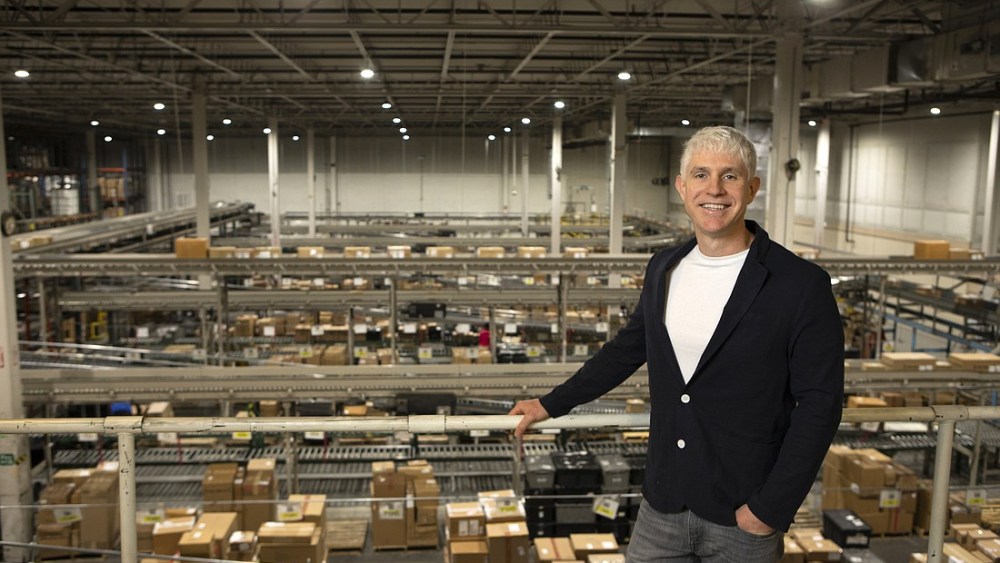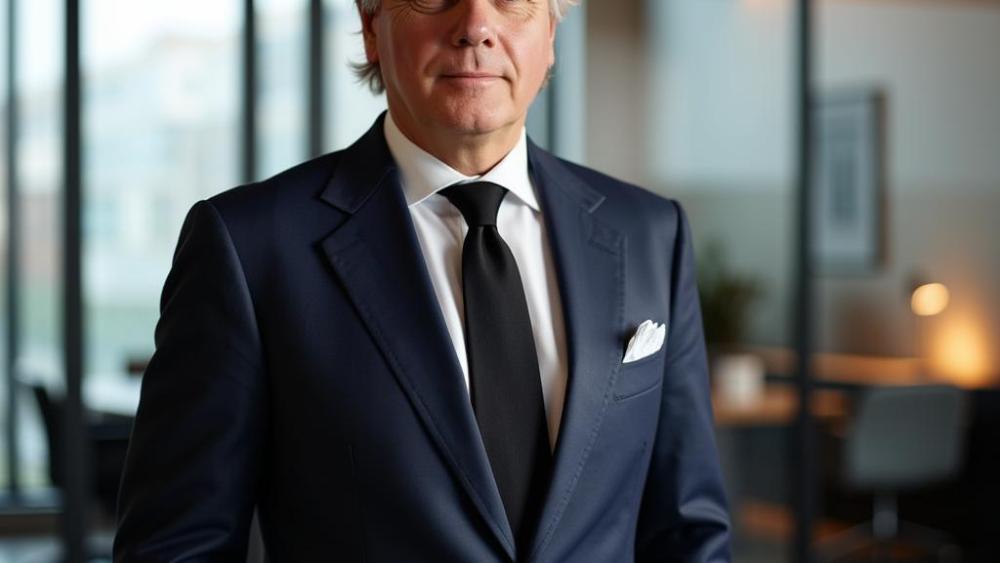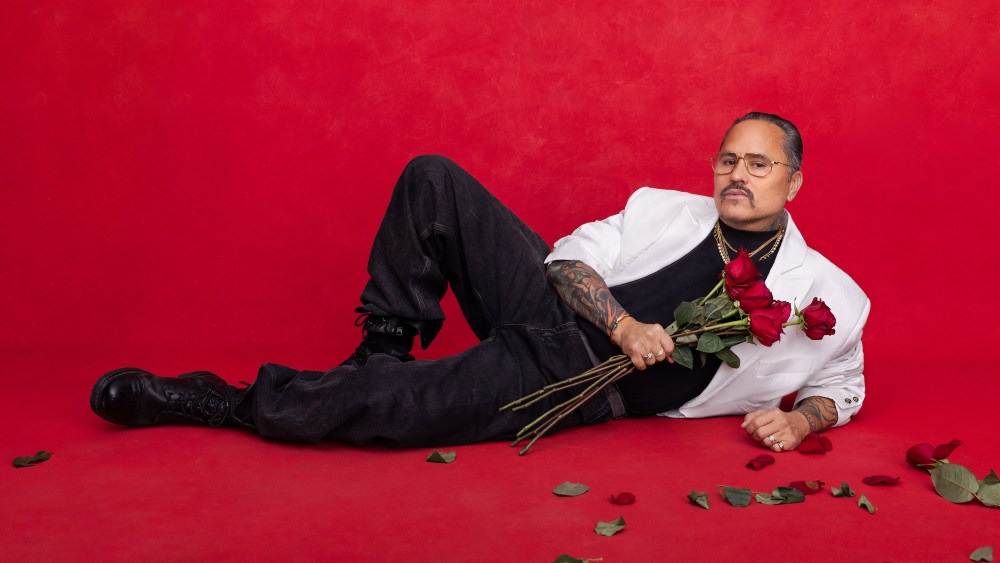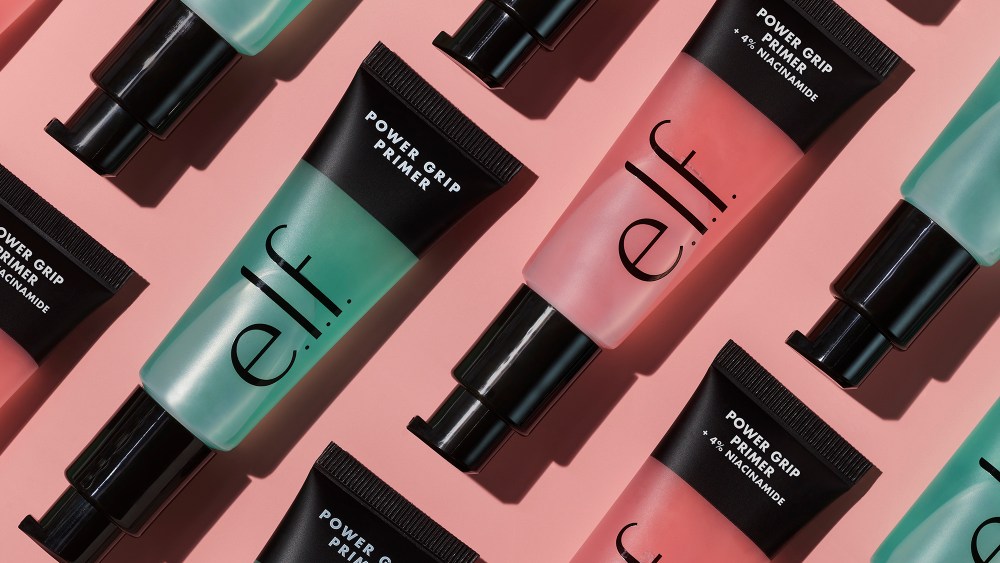The story starts in 1915 when cotton farmer Robert Beall moved from Georgia to Florida to escape a boll weevil infestation that had devastated his crops. He settled in Bradenton and decided to open a dry goods store called the Dollar Limit, where nothing cost more than $1. Eventually, that business was transformed into Bealls, a department store where merchandise was still sold at value prices — albeit a bit more than $1.
Today, the business is run by Matt Beall, Robert’s great-grandson, and it boasts 660 stores in 22 states under the Bealls, Bealls Florida and Home Centric nameplates, employs some 14,000 people and has annual sales of more than $2 billion. A turning point for the company came during the pandemic when Stage Stores in Texas, which had operated another, unaffiliated chain called Bealls, filed bankruptcy. That allowed the Florida Bealls family to buy the name and move ahead with plans to create one nationwide company under the name Bealls, which is pronounced “Bells.”
Matt Beall, who has also become a successful podcaster, has remained true to the company’s long-standing mission: to offer sharp prices on name-brand and private label merchandise to American families. Here, Beall talks about the company’s history, its evolution from an off-pricer to a value-priced retailer and its plans for the next 110 years.
You May Also Like
WWD: You’re celebrating your 110th anniversary this year. That’s quite a milestone.
Matt Beall: My great-grandfather started in Bradenton in 1915 with one store. It was called the Dollar Limit. He was 22 years old and had moved down from Georgia. They had cotton farms and he was leaving a boll weevil infestation of his crops. He actually lost the company to the bank during the Great Depression in the late ’20s, and worked for about 10 years to buy it back. It became the $5 Limit after inflation hit. Then it became Bealls after that when my grandfather came on board. He had a little bit more appetite for growth. So did my dad, but those conservative beginnings are still in our DNA. We recognize how critical it is to have a cash position and not get leveraged in debt. We protect that cash position as strongly as we can as a company, so that if something like COVID comes along and you have to shut your doors for five or six weeks, you can survive and come out strong on the other side.

WWD: Was that your experience during the pandemic?
M.B.: Yes, we purchased a distribution center in Texas, and we purchased the intellectual property of Stage Stores, which included the Bealls name nationally, and we opened about 150 stores over that two-year period that Stage had vacated. It’s a different real estate market today. It’s tighter, it’s more challenging, which is strange because when you think about how difficult retail has been, there aren’t a lot of empty boxes right now because there’s less construction, and fewer deals being done because of inflation and the cost of materials.
WWD: How has the company been performing after that aggressive expansion?
M.B.: After COVID, we experienced a really nice boom — there was a lot of stimulus money out there, and I think business around the country was good. It was certainly good in Florida. Now, consumer spending has been getting a little bit more challenging. People are taking on more credit card debt, there’s less disposable income out there with high inflation and high interest rates. So we’re kind of ebbing and flowing along with what’s happening in the economy. But we’re enjoying being alive and getting smarter on the downs and getting bigger on the ups.
WWD: How many stores do you operate now?
M.B.: We’re at around 660 and Stage is no longer Stage, they’re all Bealls.
WWD: You said Stage had operated Bealls stores too? Can you explain that?
M.B.: Stage Stores was a company that was based out of Texas, and they went bankrupt just after COVID. They had the name Bealls and were operating around 50 stores under that name, along with Gordmans and Goody’s. We used to have a bunch of our stores called Burkes Outlet because Stage had the rights to the name Bealls in about 18 of the states that we operated in. But we purchased the intellectual property from Stage to have the Bealls name, and we actually went through a huge rebrand after we did that, and renamed all of the Burkes stores to Bealls.
WWD: I imagine that would be confusing.
M.B.: It’s caused so much confusion over the years, but it was a completely separate chain. It was a family business that Stage Stores bought back in the ‘70s or ‘80s and they had the name rights across the country outside of Florida, Georgia and Arizona.
WWD: Was that also an off-price business and do you consider yourself an off-pricer?
M.B.: Off-price is not really real anymore. Everybody expects things to be at the right value. We used to say off-price when department stores ruled the world, but now off-pricers rule the world. It’s just what’s normal. It’s what people expect to pay for goods. I consider ourselves to be “on value”: we don’t have a big markup, we negotiate really well on our costs, and we pass that value along to our guests.
WWD: Interesting perspective. Tell me about the product breakdown in your stores.
M.B.: It’s a full-line store: apparel, footwear, accessories. We’ve got kids’ and a nice-size home department just like you’d find in a T.J. Maxx, Marshalls, Ross or Kohl’s.

WWD: Do you carry national brands?
M.B.: We are very much branded. In fact in just the last year, we’ve increased our penetration of high premium national brands by 15 percent. We were around 50 percent last year and we’re around 65 percent this year. People still want to buy less premium brands, of course, so we carry that too, but we are moving the needle in a significant way, very, very quickly towards a model that’s much more similar to a fully branded retailer like a Marshalls or a T.J. — even Ross has tremendous brands. So we’ve got all the brands, and we’re continuing to work on getting more. But there are a couple of divisions that are behind. I would say men’s is very strong in terms of brands. Ladies is really the area that’s made a tremendous amount of progress. The area where we have the most work to do would be home. That is currently something that the merchants are working very hard on to increase the brand penetration and quality of the product that’s going to be a major step towards our future. When you’ve got a full-line store, you can’t have one division that looks different than the others. It’s got to be cohesive. And so I’ve really challenged our chief merchant and our president to really step up their game. So that’s what’s coming over the next several quarters.

WWD: How much of your business is home versus apparel and accessories?
M.B.: Apparel is the majority of our chain. We’re also about 20 percent penetrated in footwear in Bealls Florida, but only 8 percent in Bealls. Just to clarify, we’ve always had Bealls Outlet and Bealls Department Stores, but we’ve gone through this dramatic rebrand and transformation, and we are becoming one Bealls. That’s our strategy. The acronym is BOB: Becoming One Bealls. And my dad’s name was Bob, and he was our last family leader. We’re also going from Burkes Outlet to Bealls so it should be very simple for everybody.
WWD: Is there a difference between Bealls and Bealls Florida?
M.B.: Bealls Florida is really just a coastal chain. We’ve got 600 stores that are called Bealls and 50 that are called Bealls Florida. It’s a larger box store, but it’s still a Bealls. That chain too, is value-oriented. It’s not high and low. It’s not mark the stuff up high and run sales and sell it at a discount. We’re over that game, that is dead.
WWD: Have you seen a difference in your ability to secure product these days, with fewer department stores and struggles at retail in general?
M.B.: No. I think that the vendor community has really embraced the partnership that they have with Bealls. We’ve got a tremendous merchant team that loves the vendor community, and the vendor community loves Bealls. They see us as an underdog: the last remaining big family regional retailer out there. And as their accounts continue to dwindle, Bealls becomes more important for them. I remember starting my career in 2004 and everybody had so many accounts. You think about what it’s like today versus then, and we are very valuable to the vendor community. They know that we’re financially responsible and that we’ve been a good partner for decades, and they want us to be around and to survive. And as we move toward one Bealls, that also is super helpful from a sourcing standpoint, and opening up new accounts that maybe they hadn’t worked with in the past. That has really been a net positive.
WWD: Do you offer any private label and how big a business is that for you?
M.B.: In total, it’s much bigger for Bealls Florida than it is for Bealls. But in total, it’s about 8 percent or 9 percent of the total business. Our biggest exclusive brand is Reel Legends, and that’s really a Bealls Florida brand. It’s Florida’s number-one fishing brand, and it’s been a great brand for us since 1997. It’s performance fabrications at real value pricing and the quality and fit are fantastic. Coral Bay is also a big traditional, mature brand on the ladies side that we source direct. It’s an exclusive brand for Bealls Florida. On the Bealls side, Silver Bait is a big brand from an outdoor fishing brand standpoint.
WWD: When you buy national brands, is it leftover product or current season?
M.B.: It’s both.The bigger we get, the easier it is to do upfront buys. We still like to make it a treasure-hunt environment, so we’re not placing huge orders with vendors. You’re not going to see 12 of the same style, color and size on a rack. It’s going to be smaller lots. But it’s not necessarily leftovers, it might be cancellations. When business is tough, retailers make some cancellations, and we snap them up, and there’s no time lost in the supply chain. It just goes from them to us, and we’re buying it at a better price. And we pass that value along to the guest. It’s a scrappy merchant team, they’re scouring the market every day, all day, to bring the best value and brands to the stores.
WWD: How do you differ from a T.J. Maxx, Marshalls or Ross?
M.B.: If you compare us to a Ross, we are going to be more in stock. And you’re not greeted with a security guard. You’re greeted with an actual human being when you walk into the store that says “hello” and “how are you,” and that hopefully cares about your shopping experience. We pride ourselves on guest service and we attempt to to employ people that embody our values culture. But purely from a product standpoint, we are going to be a bit more of a family atmosphere where Ross is all about cheap. They’ve got great brands, don’t get me wrong, but it’s all about, let’s be $1 or $2 cheaper than everybody else. And TJX is more about being fashionista, specifically on the female side of the business. Bealls is really about being a family business. We want to have everybody in your family covered, and we want you to enjoy coming to our stores and shopping. We’ve got the same brands as T.J. Maxx and Marshalls, and we’re priced between a Ross and a T.J. store. Ross is working on very, very low IMU [initial markup], and they can do that because their turn is so fast and they’re more in metropolitan markets. We’re more in core markets. So it’s just a slightly different business model, although we’re working hard to improve our turn and to get better brands and to decrease our markup.

WWD: You mentioned a treasure hunt. Because the content changes so fast in the stores, how do you navigate that on digital?
M.B.: That’s the challenge, right? We were one of the first companies in America to get on the e-commerce bandwagon with Bealls Florida. I think it was 1996. Now, everything’s e-commerce and I think that’s huge part of the reason department stores are dying. And nobody’s reading newspapers anymore, so it’s much more difficult to connect with a guest on weekly sales and ads. Everything’s digital. Everything’s on your phone. So everybody’s fighting for those few seconds that they can put their stuff in front of your face while you’re looking at your phone. We use digital for our marketing. We do some direct mail too, but it’s primarily digital advertising. We’ve launched an ambassador program for Bealls and we’ve got over 900 people in just a couple of months. The influencer thing is not cost effective and it’s much more challenging than it is to have ambassadors. We reward our ambassadors through our loyalty program. We’re about to roll that out to Bealls Florida as well. They’ve really reconnected with our guests and let them know about our product offering and great brands and prices. Over the last three months or so, it has really created a nice bump in our sales trend.
WWD: Now that you’re celebrating 110 years, what does the future hold for you? Where are the growth opportunities?
M.B.: It’s certainly more stores. It’s certainly better brands. It’s to be the best brick-and-mortar retailer that we can be. It’s about looking inward and becoming the best version of ourselves. E-commerce is going to be a part of our business, but not the vast majority. We think there’s always going to be that desire to get out and shop in an actual physical store. And AI is going to change everything — it is absolutely going to disrupt retail in a significant way in the next five to 10 years. It’s going to make shopping much easier to do just on your phone. But we have built this business over 110 years to be a brick-and-mortar business. That’s what we have so we have to embrace AI and do everything we can to embrace technology. That’s kind of what we’ve done for the last 11 decades: embrace change and change right along with it. Adapt and just continue to push forward. We want to continue to outfit your family for less. That’s been our motto now for 100 years — nothing has changed. I think when you get away from that, that’s when you can begin to struggle.

WWD: In your spare time, you’ve also started a podcast. Tell me a little big about that.
M.B.: I’ve actually got two of them. One is called “Matt Beall Legacy,” and it’s about the legacy of our business. I interview people internally within the business and sometimes external partners. I’ve had Guy Harvey and Derrick Brooks on the podcast. Derrick Brooks is an NFL Hall of Famer and a charity partner that we work with. It’s a great way for our company to be aware of what’s happening and a great way for potential employees that are checking us out to learn about our culture and how we operate. We’ve had a lot of people that we’ve hired because of the podcast — they watch it and want to be a part of what we have going on. I’m having business meetings with people anyway, so why not turn on a camera and record it and put it out there for people to enjoy and to learn more about our company.
WWD: What’s the other podcast?
M.B.: The “Matt Beall Limitless” podcast. “Legacy” has maybe 3,000 subscribers across all channels. But “Limitless” has nothing to do with business. It’s purely topics that I’m fascinated with and explore from a personal, non-business-related kind of place. It’s been live for a year and a half, the same as “Legacy,” but it’s got well over a quarter-million followers. It’s grown really fast, and it continues to have an upward trajectory. It’s not for everybody, but the people that do subscribe and follow it are really enjoying it.
WWD: What does the next 110 years hold for Bealls?
M.B.: We have such a talented group of people that work here, and a great culture and I feel compelled to get out there and talk about it from time to time, because it’s the people that are making the business special and continue to hopefully spread joy. We’re attempting to make a difference. Of course, we want people to shop and get great product at great prices and save their money for other stuff. But we were also want to make a difference in the world and spread positivity while we’re here. That’s our goal.



